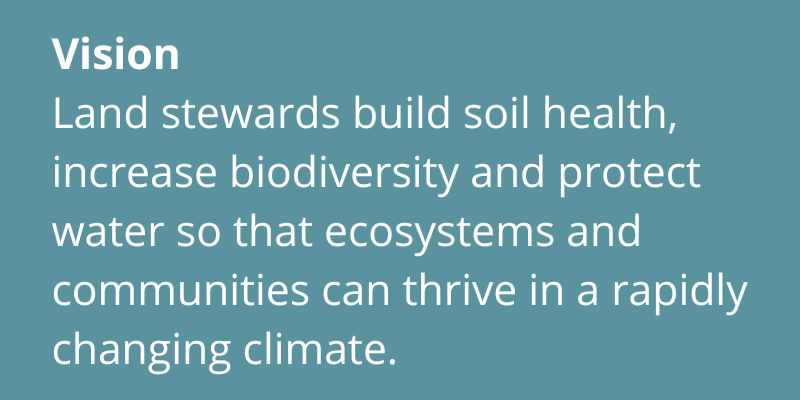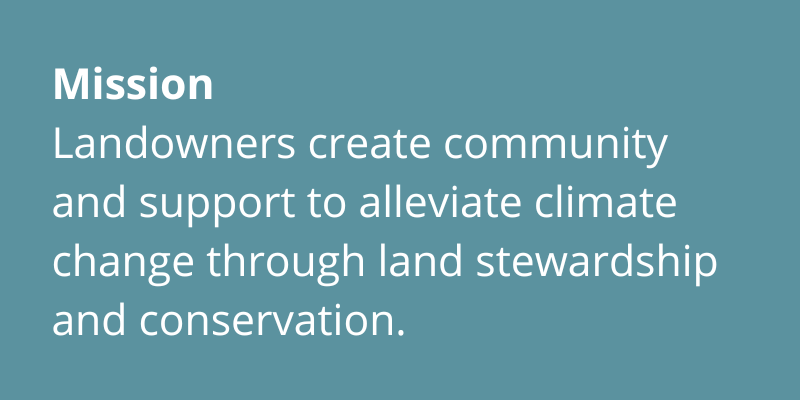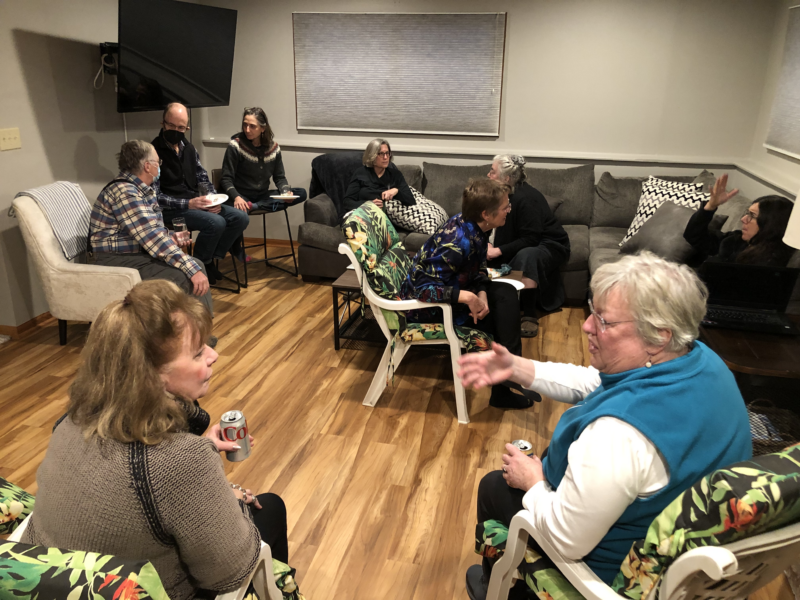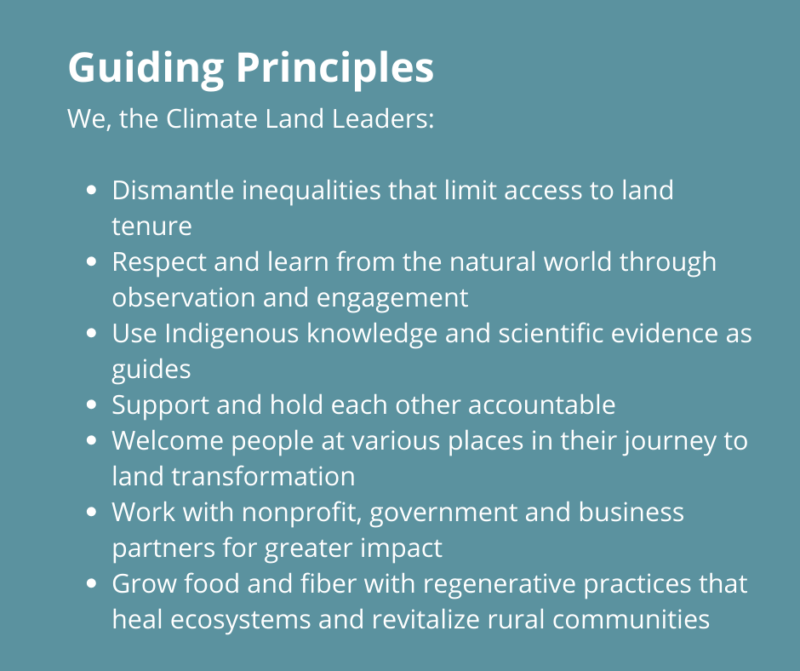Climate Land Leaders have a new and exciting Strategic Plan! Thirty-plus Climate Land Leaders generously shared input for the development of the Plan. The Strategic Planning Committee of Jackie Armstrong, Carol Bouska, Theresa Keaveny, Joe Luetmer, Kate Moos, Meg Nielsen, Julie Ristau and Jane Shey worked with staffers Sarah Hunt and Teresa Opheim to draft an ambitious goals for our next two years.


Here are some highlights:
Goal 1: The Climate Land Leaders Initiative grows and strengthens its community and support
Climate Land Leaders overwhelmingly report they belong for the community and support they receive from other Climate Land Leaders. Here are some examples of their feedback:
“I need a community I can learn from, people who understand the dire need to make changes to agriculture.”

“The innovative and unusual – we try out some of our new ideas on neighbors and other folks and then come back to Climate Land Leaders, get reinvigorated and learn more.”
“The group makes space for conversation about the creative and spiritual dimensions of a connection to place, as well as the real grief and loss we all experience as we contemplate the climate crisis.”


Our task is to grow – for greater impact – while maintaining the camaraderie that is so valued by the group. Our expansion target for the next two years: 210 individuals, who control 75,000 acres in the Midwest, participate, with that cohort becoming more ethnically diverse. We ended 2022 with about 65+ participants (nine are people of color) who control 25,000 acres. Our metric for success: All Climate Land Leaders report the Initiative has given them a stronger community.
Action steps under this goal include plenty of opportunities for the Climate Land Leaders to meet up with each other. We want to continue our robust track record: We have held more than 55 opportunities for Climate Land Leaders to meet up since we launched in March 2020. Some of these meetups will appeal to the entire cohort; others will be targeted toward those with row crops and tenants, those conducting natural area restoration projects, those working on their legacy and more. Meetups will be via zoom, to accommodate our far-flung group of Midwest landowners. We also commit to holding three in-person meetups per year, providing we can safely do so given the continuing pandemic.
Our focus on conservation goal setting continues. Climate Land Leaders appreciate hearing about others’ goals and the accountability they feel when sharing their own goals publicly. Our metric of success? All Climate Land Leaders report the Initiative has helped them achieve their on-farm conservation goals.
We will continue discussions of books, podcasts, movies and more, and end each meeting with an arts offering that provides inspiration and helps us manage climate grief.
Goal 2: Climate Land Leaders boldly act on the climate emergency
“We are not acting as if we’re in a climate emergency.”
A Climate Land Leader offered the above feedback, and we had to admit she is right. Our second goal involves acting with more urgency on the climate crisis. Among the bold plans: Climate Land Leaders collectively will transform 7,500 cropped acres to permanent cover by 12.2024. Doing so will involve helping them address financial and other barriers, challenges with markets, successes and policy changes needed. We will tap into all the activity encouraging grass-based systems around the Midwest, including at Sustainable Farming Association of Minnesota and Grasslands 2.0 in Wisconsin.
We will activate a Climate Land Leaders subgroup, which, along with our scientific advisor, will track research and communication on carbon sequestration in soils, greenhouse gas reductions from regenerative systems and ecosystem services measurements. We will play a leadership role in clarifying the impact of agriculture systems on climate through on-farm research projects such as 1000 Farms. We will continue to offer free soil testing, to encourage CLLs to take baseline before making significant changes.
All of our work feeds into federal and state policy, where we will focus on robust funding for those who provide ecosystem services. Finally, continuing our focus amplifying the Climate Land Leaders voices, we will ensure that Climate Land Leaders will be featured in the media and social media urging bold action on climate and agriculture. This work includes lifting up narrative leaders through a joint project with CURE (Clean Up the River Environment), Indigenous Speakers Series, Land Stewardship Project and Climate Bridge Strategies.
Our metric of success: All of the Climate Land Leaders report “I am more committed to addressing the climate crisis on my land because of the Climate Land Leaders Initiative.”
Goal 3: The Climate Land Leaders Initiative is an effective, efficient and inspiring organization
This goal includes a variety of steps for strengthening our nascent nonprofit organization, including developing a Diversity Equity and Inclusion policy, increasing the diversity of funding sources and adding a financial disclosure page to our website. The goal also includes metrics for staff and Board effectiveness and an increased focus on partnerships to ensure cross-pollination and to avoid duplication, including joint funding proposals and coalition participation.